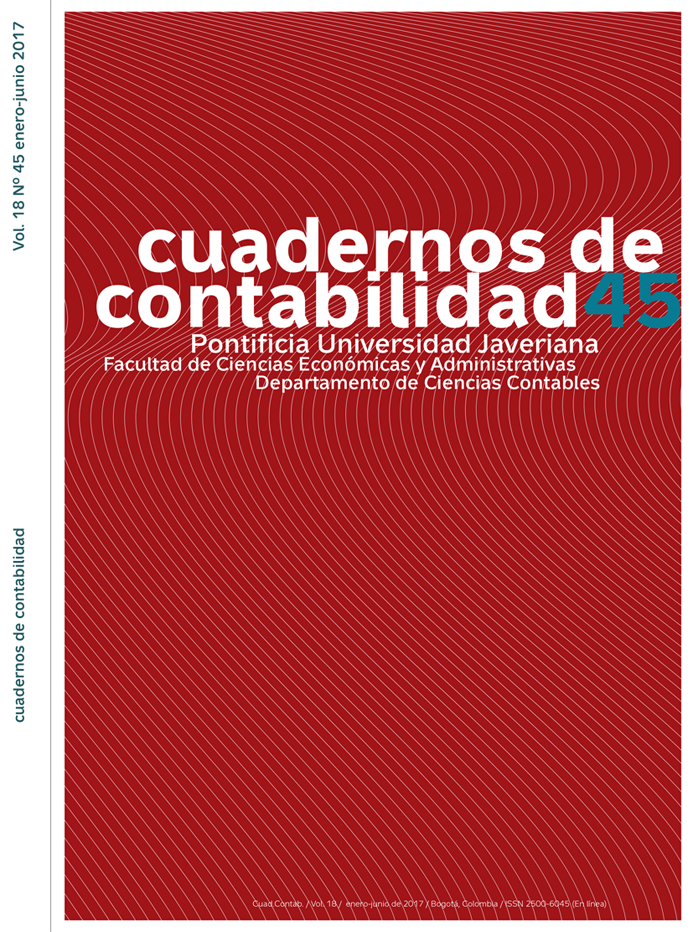Resumo
Nesta pesquisa realizou-se um estudo empírico em plantas de beneficiamento de carvão mineral localizadas no município de San
Javier, no estado de Sonora, no México, a fim de projetar um modelo sustentável de produção mais limpa que dê solução aos problemas que geram estas plantas de beneficiamento de carvão mineral, quando em operação. Identificou-se como problema principal que as plantas de beneficiamento de carvão não contribuem ao desenvolvimento sustentável, pois geram grande quantidade de emissões que afetam o recurso humano que labora nestas plantas e impactam negativamente no meio ambiente que
as rodeia. Para obter a informação requerida no design do modelo e a consecução de objetivos, utilizaram-se dois instrumentos: um inquérito e a Matriz de Leopold. Com ambos os instrumentos obtiveram-se resultados que sustentaram o modelo proposto. O modelo obtido nesta pesquisa é de aplicação geral, pois pode se utilizar em qualquer sistema de produção.
Palavras-chave: Estudo empírico, produção mais limpa, desenvolvimento sustentável, meio ambiente.
Conesa Fernández-Vítora, V. (2010). Guía metodológica para la evaluación del impacto ambiental. Madrid: Ediciones Mundi-Prensa.
Coria, I. D. (2008). El estudio de impacto ambiental: características y metodologías. Invenio, 11(20), 125-135.
Recuperado de http://www.redalyc.org/articulo.oa?id=87702010
Eggert, R. G. (2000). Sustainable Development and the Mineral Industry. En James M. Otto & John Cordes, eds. Sustainable Development and the Future of Mineral Investment, Chapter 2, 2,1-2,15. Paris, France: United Nations Environment Programme, UNEP. Recuperado de http://apps.unep.org/redirect.php?file=/publications/pmtdocuments/Sustainable%20Development%20a
nd%20the%20Future%20of%20Mineral%20Investment-20001552.pdf
Espinosa-Murga, C. (2007). Cleaner Production Excellence Model. Geneva: Sustainable Business Associates, SBA. Recuperado de http://www.sba-int.ch/spec/sba/download/Publications%20principales/CPExcellenceModel. pdf
Flores-Galicia, E. (1988). Geología y reservas de los yacimientos de carbón en la república mexicana. En Guillermo P. Salas-Guerra. Geología económica de México, 175-217. Ciudad de México: Fondo de Cultura Económica, FCE.
Grinnell, R. M. & Unrau, Y. (1977). Social Work Research & Evaluation: Quantitative and Qualitative Approaches. Ithaca, New York: E. E. Peacock Publishers.
Grinnell, R. M., Williams, M., & Unrau, Y. (2009). Research Methods for BSW Students. Kalamazoo, Michigan: Pair Bond Publications.
Hernández-Sampieri, R., Fernández-Collado, C., & Baptista-Lucio, P. (2010). Metodología de la investigación. México: McGraw-Hill. Recuperado de https://www.esup.edu.pe/descargas/dep_investigacion/Metodologia%20de%20la%20investigaci%C3%B3n%205ta%20Edici%C3%B3n.pdf
Hilson, G. & Murck, B. (2000). Sustainable Development in the Mining Industry: Clarifying the Corporate Perspective. Resources Policy, 26(4), 227-238. Recuperado de http://isiarticles.com/bundles/Article/pre/pdf/29041.pdf
Jackson, T. (1993). Clean Production Strategies: Developing Preventive Environmental Management in the Industrial Economy. Boca Ratón, Florida: Lewis Publishers.
Kayo, E. K. & Securato, J. R. (1997). Método Delphi: Fundamentos, críticas e vieses. Cadernos de Pesquisa em Administração, Universidade de São Paulo, São Paulo, 1(4), 51-61.
Labonne, B. (1999). e Mining Industry and the Community; Joining Forces for Sustainable Social Development. Natural Resources Forum, 23(4), 315-322.
Leopold, L. B., Clarke, F. E., Hanshaw, B., B. & Balsley, J. B. (1971). A Procedure for Evaluating Environmental Impact. Geological Survey Circular 645. Washington: United States Department of the Interior. Recuperado de https://pubs.usgs.gov/circ/1971/0645/report.pdf
Martínez, M. (mayo de 2005). Gestiopolis.com. Recuperado de http://www.inteligenciacolectiva.org/principal_proyectos_metodologia_delphi
Mayntz, R., Holm, K., & Hübner, P. (1988). Introducción a los métodos de la sociología empírica. Madrid: Alianza Universidad.
Organización de las Naciones Unidas, ONU (1992). Declaración de Río sobre el Medio Ambiente y el Desarrollo. Conferencia de las Naciones Unidas sobre el Medio Ambiente en Río de Janeiro, 3-14 de junio de 1992. Recuperado de http://www.un.org/spanish/esa/sustdev/documents/declaracionrio.htm
Organización de las Naciones Unidas, ONU (2010). Resolución A/RES/64/212. Ciencia y tecnología para el desarrollo, aprobada por la Asamblea General el 21 de diciembre de 2009. New York: Asamblea General. Recuperado de http://www.un.org/en/ga/search/view_doc.asp?symbol=A/RES/64/212&Lang=S
Secretaría de Economía del Estado de Sonora (2014). La minería en Sonora 2006-2012. Hermosillo, Sonora: Secretaría de Economía. Recuperado de http://www.2006-2012.economia.gob.mx/files/transparencia/informe_APF/delegaciones/sonora.pdf
Selltiz, C., Wrightsman, L., & Cook, S. W. (1980). Métodos de la investigación en las relaciones sociales. Madrid: RIALP.
El aval sobre la intervención de la obra (revisión, corrección de estilo, traducción, diagramación) y su posterior divulgación se otorga mediante una licencia de uso y no a través de una cesión de derechos, lo que representa que la revista y la Pontificia Universidad Javeriana se eximen de cualquier responsabilidad que se pueda derivar de una mala práctica ética por parte de los autores. En consecuencia de la protección brindada por la licencia de uso, la revista no se encuentra en la obligación de publicar retractaciones o modificar la información ya publicada, a no ser que la errata surja del proceso de gestión editorial. La publicación de contenidos en esta revista no representa regalías para los contribuyentes.



